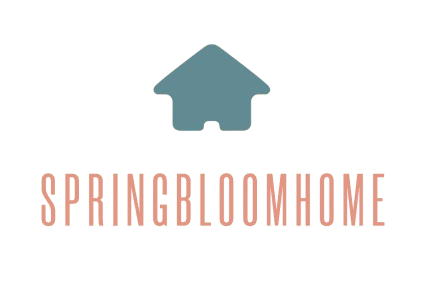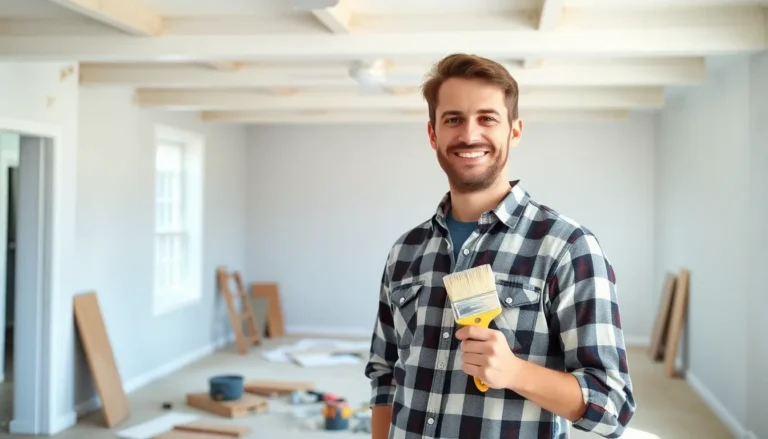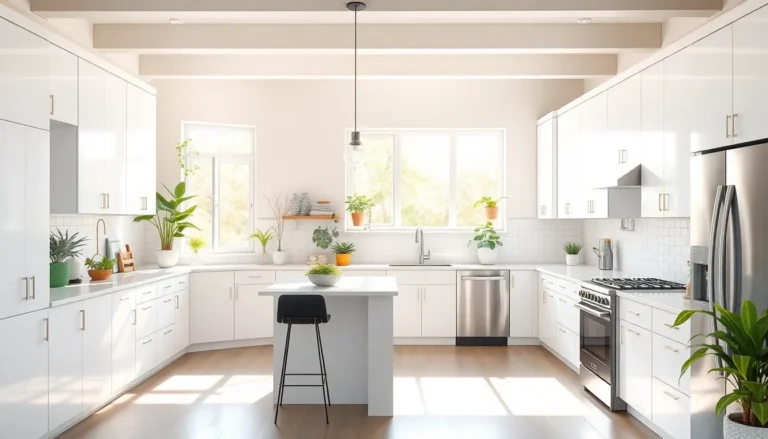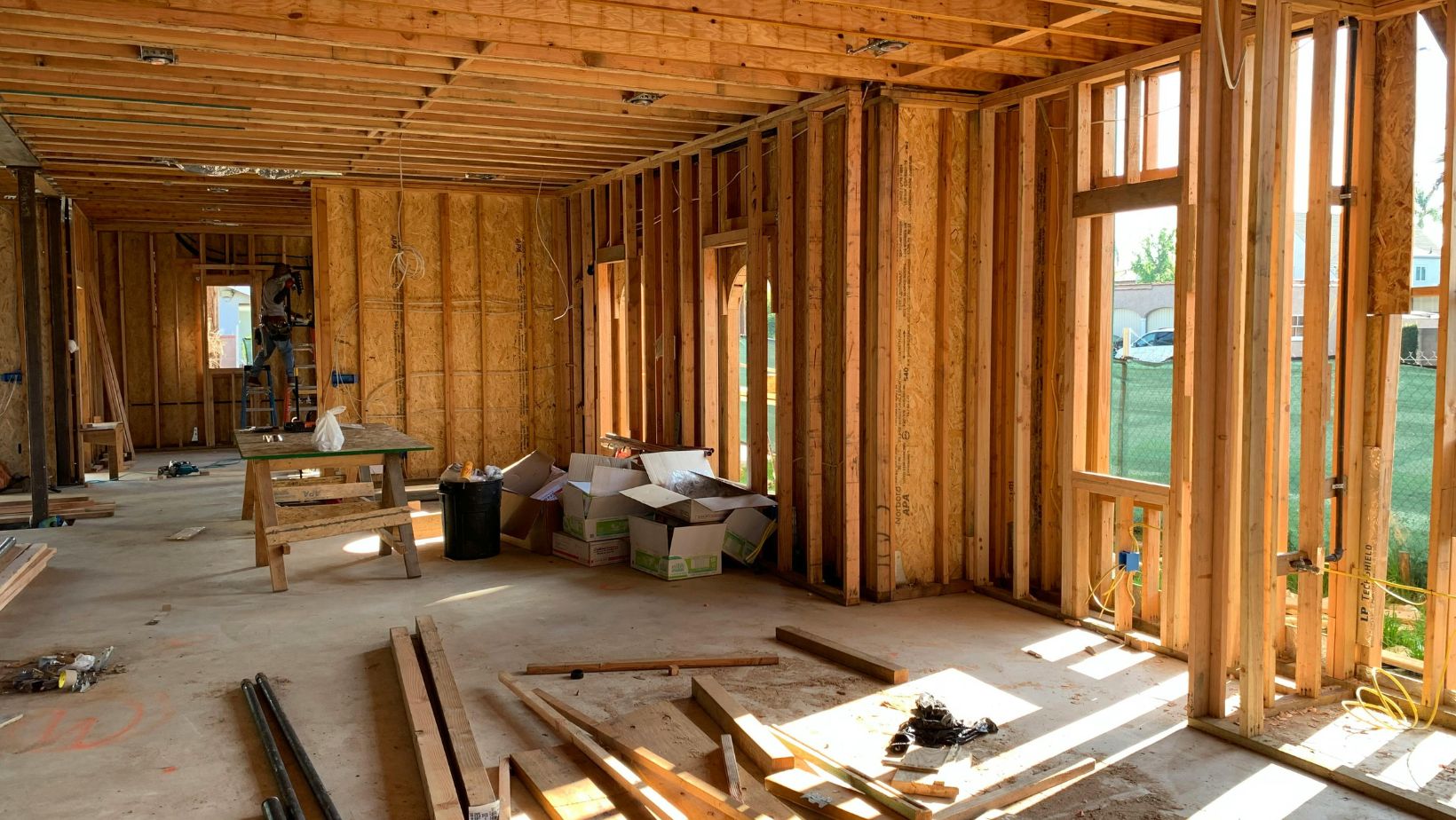
Old Home Renovation: Transform Your Space While Preserving Its Unique Charm
Old homes have a charm that new builds just can’t replicate. They tell stories through creaky floors and vintage wallpaper, but let’s face it—sometimes those stories need a little editing. Renovating an old home can feel like a thrilling treasure hunt, where every wall you tear down reveals a new surprise, and not all of them are as delightful as grandma’s secret cookie recipe.
Old Home Renovation
Old home renovation involves not just updating spaces but also maintaining their historical integrity. Homeowners often face unique challenges and rewards during this process.
Importance of Preserving History
Preserving history emphasizes the value of architectural heritage. Historic features like moldings, fireplaces, and original windows contribute significantly to a home’s character. Families often seek to keep these elements intact to honor the stories they represent. A renovated home that retains its original charm often attracts more interest from buyers. Communities benefit when historic homes stay preserved, often enhancing property values and local tourism.
Common Challenges Faced
Renovating old homes often presents a variety of challenges. Structural issues may arise, including foundational problems or outdated plumbing. Homeowners frequently encounter code compliance difficulties due to changes in building regulations over decades. Discovering asbestos or lead paint during renovation can hinder progress and require specialized remediation. Unforeseen costs often occur, making budgeting critical. Understanding these challenges prepares homeowners for the complexities involved in preserving a piece of history.
Planning Your Renovation Project
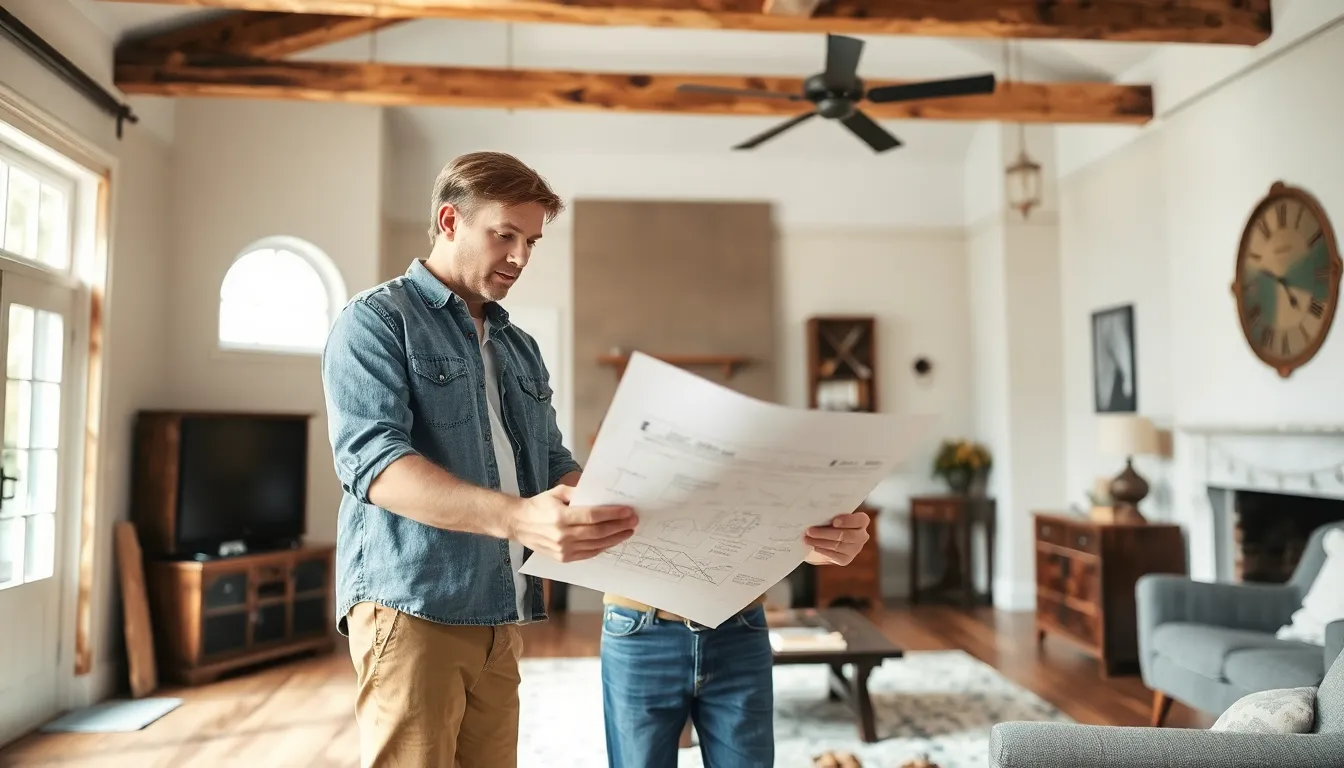
Planning a renovation project for an old home involves careful consideration of numerous factors. Establishing a clear vision sets the foundation for a successful transformation.
Setting a Budget
Setting a budget ensures financial limits guide the renovation process. Homeowners should assess all potential costs, including materials, labor, and permits. Unexpected expenses may arise due to structural repairs or hazardous materials, so allocating an additional 10 to 20 percent for contingencies helps maintain financial stability. Prioritizing critical areas, such as roofing or plumbing, allows for more focused spending. By creating a detailed budget, he or she can track expenses effectively and avoid overspending.
Creating a Timeline
Creating a timeline streamlines the renovation process and helps manage expectations. Homeowners can break down the project into manageable phases, assigning specific timeframes for each stage. Communicating with contractors aids in establishing realistic timelines and accommodating delays caused by weather or unexpected discoveries. Regular evaluations of progress provide opportunities to adjust timelines as necessary. Keeping an organized schedule minimizes stress and supports a smoother renovation experience, ensuring that the project aligns with personal timelines and goals.
Key Areas to Focus On
Focusing on specific areas greatly impacts the success of an old home renovation. Prioritizing essential updates ensures a seamless and efficient transformation.
Structural Updates
Structural integrity holds utmost importance during renovations. Inspect roofs for leaks or weakness, addressing any issues promptly. Foundation stability affects the entire home, so evaluate it for cracks or settlement. Walls may also show signs of wear; reinforcing them can prevent future issues. These updates lay the groundwork for any aesthetic improvements.
Electrical and Plumbing Considerations
Updating electrical systems and plumbing is non-negotiable. Assess outdated wiring for safety and code compliance, replacing it to support modern needs. Plumbing systems can corrode over time, so check for leaks and replace old pipes. These improvements enhance functionality and avert costly repairs down the road. Proper electrical and plumbing updates ensure the home’s systems are both safe and efficient.
Aesthetic Upgrades
Aesthetic upgrades breathe new life into old homes. Reviving original features, like crown moldings or hardwood floors, preserves character while enhancing beauty. Paint colors can dramatically alter a space’s feel; choose hues that complement the home’s history. Installing modern fixtures brings a contemporary touch, blending old with new. These upgrades not only brighten spaces but also increase property value.
Fire Safety in Everyday Living
Curtains and other soft furnishings are often overlooked when considering fire hazards. However, studies from the National Fire Protection Association show that textiles can play a major role in how quickly flames spread in a room. By switching to flame-resistant fabrics, you give your household valuable extra minutes to act in an emergency. Installing fire retardant curtains in bedrooms, living areas, or offices is a small step that adds meaningful protection.
Choosing the Right Materials
Selecting appropriate materials is crucial during old home renovations. Choices impact both aesthetics and structural integrity, shaping the overall outcome.
Sustainable Options
Sustainable materials offer eco-friendly choices while preserving history. Reclaimed wood or recycled brick can enhance durability and maintain character. Bamboo serves as another sustainable option, providing strength and environmental benefits. Homeowners benefit from lower energy costs by incorporating energy-efficient windows. These choices support sustainability, aligning with 21st-century values while ensuring architectural beauty remains intact.
Matching Historical Accuracy
Accurate materials maintain the authentic character of old homes. Choosing finishes that reflect the original design style preserves historical integrity. Authentic restoration hardware, like vintage doorknobs and hinges, enhances charm and functionality. Selecting period-appropriate paint colors helps capture the essence of the era. Researching local historical guidelines supports authenticity, ensuring renovations respect the home’s heritage. Using historically accurate materials fosters a connection to the past, appealing to potential buyers and the community.
Hiring Professionals vs. DIY
Choosing between hiring professionals or tackling a renovation project personally influences the overall outcome. Each option presents unique advantages.
Benefits of Professional Help
Utilizing professional services offers expertise not easily matched. Skilled contractors navigate complex renovations in older homes with ease, ensuring compliance with building codes. A wealth of experience enables them to identify potential issues, like hazardous materials or structural weaknesses, early in the process. Professionals also streamline time management, often completing projects faster than inexperienced individuals. Financial considerations also emerge; while initial costs seem high, expert quality often leads to lasting value and fewer long-term repairs. Overall, hiring professionals can ultimately safeguard a renovation investment.
Tips for Successful DIY Renovations
Successful DIY renovations hinge on proper planning and execution. Begin with thorough research about the specific challenges inherent to old homes. Gathering materials that match the home’s historical character is crucial. Drawing up a comprehensive timeline supports managing schedules realistically. Learning and practicing essential skills, such as basic carpentry or plumbing, empowers homeowners during renovations. Moreover, remaining flexible in the face of unexpected challenges aids in adapting strategies effectively. Connecting with local resources or community forums fosters support while sharing insights and advice. Embracing these DIY principles leads to rewarding renovation experiences.
Conclusion
Old home renovation is more than just a project; it’s a journey that connects homeowners to the past. By embracing the unique character of these properties while navigating the complexities of renovation, they can create beautiful living spaces that honor history. Careful planning and a focus on maintaining architectural integrity not only enhance the home’s charm but also contribute to the community’s overall appeal.
Whether choosing to hire professionals or tackle DIY projects, the key lies in balancing respect for the original features with modern updates. With the right approach, homeowners can transform old houses into treasured homes that stand the test of time.
